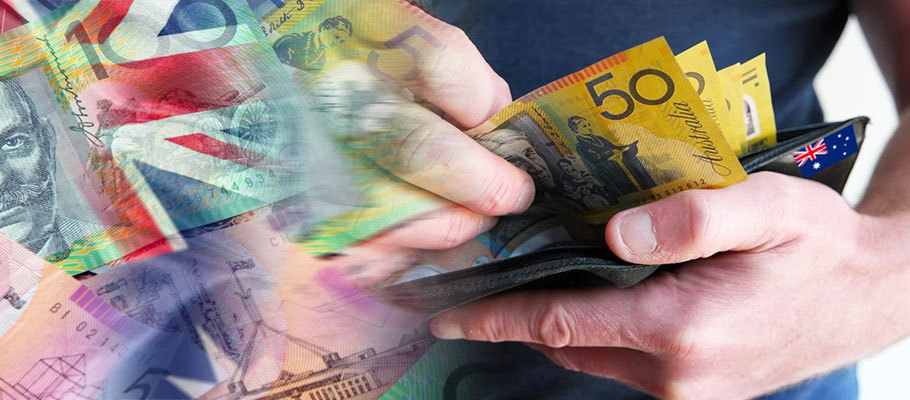
Published: January 8th, 2021
The Australian Dollar exceeded expectations this week as global markets began to stabilise and investors gave the thumbs-up to more indicators that a robust economic recovery is underway in Australia’s domestic economy.
After government figures showed job advertisements up sharply in December, AUD was higher against all major rivals, especially an underwhelming pound. The news was supported by when sister economy New Zealand also reported that local job advertisements had risen there as well in December, up by more than 9 per cent . The figures take total job adverts above their pre-pandemic levels.
Economists at ANZ Bank New Zealand told the press this week that the island nation’s effective management of the COVID-19 crisis has put the country on track for a fast-paced recovery. The bank expects solid employment gains to continue early into the first quarter of 2021, and for the unemployment rate to fall rapidly.
The optimism was slightly tempered by the need for job ads to exceed pre-pandemic levels for an extended period, and the bank expects challenges in the first half of the year to slow employment growth temporarily, which could also impact markets.
Australia’s job ads data points to a recovery starting in November, when the unemployment rate also fell, dropping from 7 per cent to 6.7 per cent on the back of 90,000 new jobs being created, or ‘furloughed’ jobs being reactivated, following the lockdowns in the coronavirus first wave.
The numbers add to the body of economic indicators of recovery that prompted Australia's treasury to suggest last month that the economy could avoid contraction in GDP for 2020. This despite months of losses incurred by businesses under commercial and travel restriction while the coronavirus first raged through the country.
Currency analysts at RBS said Australia’s position puts it ahead of economies like the United kingdom’s, and strongly suggests that we will see more outperformance by the Australian Dollar.
US investors weighed into the positive outlook by re-gaining their risk appetite, spurred on in part by the decision on Tuesday by the New York Stock Exchange to reverse its decision on delisting several Chinese telecoms firms, which will all now remain on the NYSE.
Currency and commodity technical analysts at Commerzbank said this week that AUD/USD was approaching highs last seen in November 2016 and March 2017, and they expect to ‘short-term cap’ before the pair advances to a 2018 peak of .8134.
The Aussie dollar pushed back the pound to near two-year lows when Westminster announced a new full-scale national lockdown in response to surging cases of the new and more infectious strain of COVID-19 which is now ravaging the country.
London’s actions have likely spooked investors with worries about disruption spilling over to other national economies, and currencies. Britain’s shutdown is pegged to sit heavily on the country’s services-dominated economy in the first quarter, following a 12-month period where most economists thought GDP to have shrunk by more than ten per cent
Currency analysts at MUFG told investors this week that Britain’s double-dip recession will put added pressure on the Bank of England to push out additional monetary easing as early as February 2020, when the bank’s next policy meeting is held. Market speculation is already building in advance of the meeting over the prospects of Threadneedle Street introducing negative rates.
The BoE’s options for turning out more stimulus are becoming limited. All of these moves are expected to weigh heavily on the pound and reduce further upside from the 11th-hour Brexit deal negotiated at the end of December.
More restrictions in Europe also created a tense atmosphere for investors as the new week, opened, pulling the Pound back into retreat against its major currency rivals. Sterling’s underperformance had the Pound-to-Australian Dollar rate at -0.56 per cent at mid-week.
Further Aussie Dollar price action and recovery in risk-on sentiment came ahead of the US senate runoff election in Georgia, where the outcome of two Senate seat races will decide control over the US Congress. Democrats winning control of both houses of congress as well as the White House will have an impact on both the greenback as well as risk currencies.
Flipping the seats from Republican control will signal to investors that more debt-funded financial support to the economy will be coming from Washington in the coming months, without requiring the usual partisan wrangling and compromises that have marked the legislative agenda when different parties controlled different houses of congress. Arguments between legislators and threats to shut down the US government in the past have generally been seen as a risk to the US Dollar.
However, government stability can be a double-edged sword where currencies are concerned. Democrat control over the Senate and a Congressional majority in both chambers could also raise fears of excessive deficit spending and punishing regulatory change. All in all however, analysts seem to agree that that an end to the Trump and ‘Tea Party’ republican era will be welcomed by most investors.
Now that the democrats have won, currency strategists at AUD believe risk markets will likely ‘take a hit.’ Tax, regulatory and bond market concerns will win the day over any worries about more stimulus-driven growth, they say.
Australia’s construction sector posted positive news late in the week when November Building Approvals were shown to be up 2.5 per cent, the third successive gain to close out 2020. The Australian Bureau of Statistics said private sector approvals climbed to their highest level since 1999.